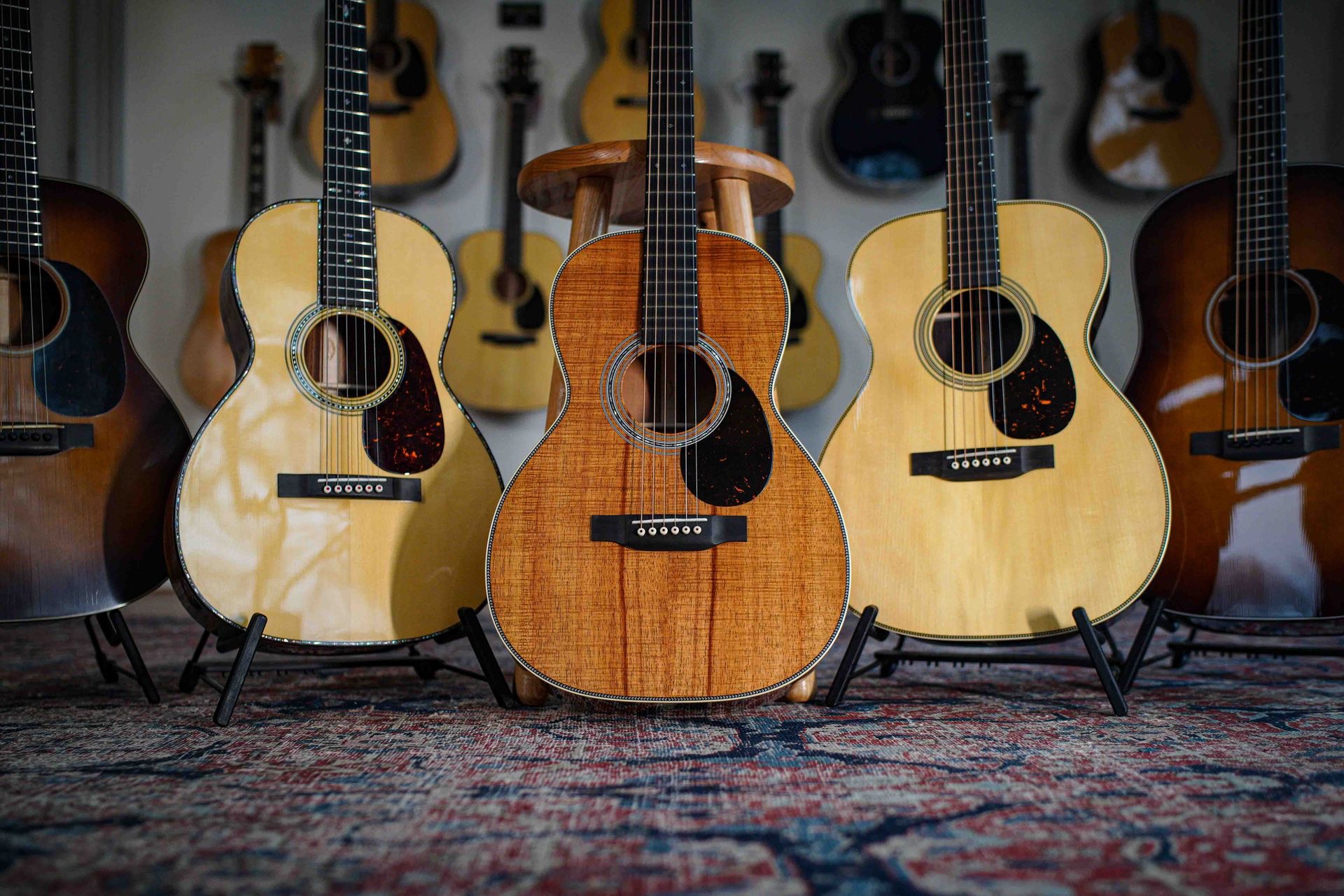Solid Wood Guitars
Here at The Fellowship of Acoustics, we love wood. How it looks, how it smells, how it feels, how it sounds: we just can't get enough of it, because every piece of wood has its own characteristics. Just look at an listen to that beautiful rich sound of Rosewood with deep lows and very pronounced highs. That crystal clear, direct sound of Maple and the warm, earthy sound of Mahogany. And then we haven't even Koa, Blackwood, Walnoot and a lot of other tonewoods.
On top of that, every piece of wood has grown, was sawn or dried slightly different and that adds something unique to a guitar. Tonewood lives! It develops over time and that means that if you take good care of a guitar and play it regularly, a solid wood guitar will sound more and more open, fuller and richer. As a result, a vintage guitar that is more than 60 years old can blow you away, because that wood has had time to get convinced that it is no longer a tree, but an instrument.
Wood is also just great to look at thanks to the mesmerizing grain patterns and subtle color differences, it has the same enchanting effect on us as a nice fire: it never gets old. Just like the sounds, the colors of a guitar also become deeper, adding something extra to the wood year after year after year.

We can go on like this for hours, but the short of it is: wood = awesome stuff!
Laminate Guitars
Laminate according to Van Dale’s Dutch Dictionary: "floor covering of fibreboard with a plastic top layer, often with wood grain motif"
Because laminate is also used in the Tundra floors of the well known Swedish Furniture Giant, it may not be the first material you think of for a guitar. But a big advantage of laminate is that it looks like solid wood. And there are a lot of different types of laminate, so there is a lot to choose from. Usually these are wafer-thin, glued wood chips and / or wood layers. This allows guitar builders to combine cheaper wood and wood scraps on the inside with some nicer wood on the outside. Because it is glued, it is stronger than a normal slap of solid wood. Laminate is also easier to shape than solid wood.
That is handy because it allows you to combine cheaper wood and wood scraps on the inside with nicer wood on the outside. By gluing it together, it becomes stronger than a solid plank of regular wood. Laminate is also easier and faster to shape.
You can see this nicely in, for instance, Taylor's Academy Series, of which the top is solid wood, but the sides and back are ‘layered Sapele’, as Taylor calls it. That consists of a -laminated- core of poplar and two wafer-thin layers of Sapele veneer. Looks really great! And because the material is so strong, the backs of these guitars don't need bracing and still have a slight bulge. Partly because of this, they sound great and offer everything you would expect from a Taylor guitar. Check out this video of the guys from Driftwood Guitars attacking this Taylor with vodka, sunburn and a saw, among other things! A test that these guitars pass with flying colours!
There are many more builders who, thanks to laminate, offer beautiful, competitively priced instruments. Sheeran by Lowden is another good example of this, and the Eastman Pacific Highway Series owe the favourable price tag to laminate. Laminate is also in many cases more durable than regular wood, because you can also use wood scraps in a smart way. And laminate can withstand differences in temperature or humidity very well! There are even boutique builders who use laminate for the wafer-thin song bars on the inside of a guitar. Smart, because it's super stiff and strong material!
If it's so cheap, so strong and so durable, isn't laminate better than ordinary wood?
Well, no.
With our years of experience, we can say that wood gives more nuances, depth and complexity to the sound of an instrument. Where a solid wood guitar lives from the first day and develops, laminate is stable and stands 'still'. We are regularly surprised by the magical sound of a solid wood guitar that comes back to our workshop for an set up after 10 or 20 years. With laminate guitars we rarely have that, because they remain more or less the same. And if an accident happens with your guitar, wood can usually be repaired, with laminate there is often not much to do about it.
But do you have a limited budget? Then laminate offers every guitarist the chance to buy an excellent guitar, which you could only dream of 20 years ago. One that plays well, sounds good, on which you can learn to play the guitar, can use at campfires and take with you when you go on one of those stages where beers sail over your head. These are great advantages of laminate and that is why you will always find guitars made of real wood and laminate in our store in Dedemsvaart. Simply because we want to help every guitarist find the guitar that suits him or her best. So feel free to come by to hear and see how laminate suits you or whether you prefer solid wood. Our Fellows and the coffee are ready!
Advantages laminate
+ Affordable
+ Looks good
+ Durable
+ Stable
+ Strong & scratch resistant
Laminate Disadvantages
- Sounds less complex and full, missing some nuances
- Difficult to repair
- Hardly develops over time
Looking for your ideal acoustic guitar?
We help you step by step in our Acoustic Guitar Buying Guide.
